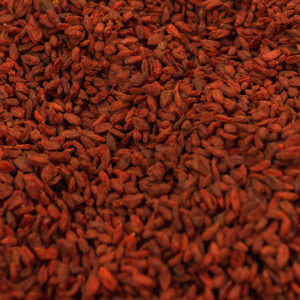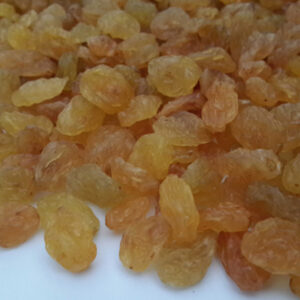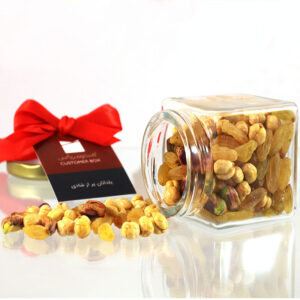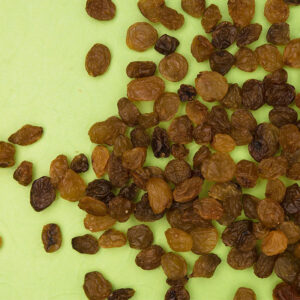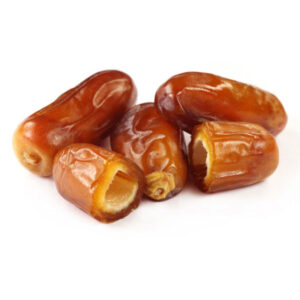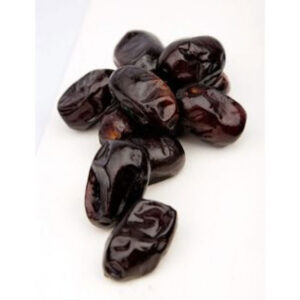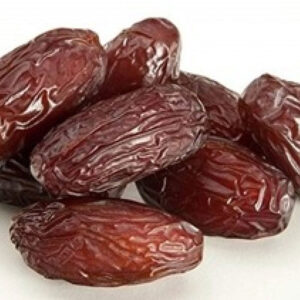Winkel
Pistachios
Pistachio nuts are intertwined with Iranian culture and are actually present in all facets of Iranian life. Pistachio nuts get a mention in all Iranian literature, stories, beliefs, traditions and rituals such as Norooz (New Iranian Year) and Yalda festival are even consumed in weddings and funerals. Iranian poets and literary figures have also referred to pistachio nuts in their works. For Iranians no festivities and feasts can be held without pistachio nuts as well as other nuts like walnuts, almond, raisin, hazelnuts, etc. They celebrate Iranian New Year by eating pistachios. If they cook special dishes, they decorate them with pistachios. Even treats such as ‘Gaz’ contain pistachios. Pistachio nuts are of strategic importance among Iranian producers of agro products.
Iran exports 150,000 to 200,000 tons of pistachios annually.
Iranian pistachios include many local names and each name represent a region shape or quality type. However in term of shapes there are in four main groups. All types can be founded in Iran market in raw or roasted with several productions offers such as mechanically, opened or closed pistachio, roasted and salted, roasted and salted with added lime.
Iranian Jumbo Pistachios

Kaleh Qouchi: This nut is famous for being large. It is sensitive to shortage of water and its leaves are complex. This type of nut is vulnerable to cold weather in spring. It can be harvested in mid September.
On the whole Kalleh Ghouchi is not being budded anymore and production is from existing trees. Although commercially quite successful, Kalleh Ghouchi trees showed a steep drop in growth and production as they grew older than 40 years old. It is expected that the production would slowly decline.
Available sizes are 20/22, 22/24 and 24/26, with 18/20 being available in small quantities.
– Iranian long pistachios

– Iranian long pistachios
The most famous local brands of Iranian long pistachio are as the following:
1- Akbari: This type is the highest economic value. Its fruits are large and almond shaped. It can be harvested in late September. This is a newer variety with good yield and with long, large nuts.
2- Momtaz: The fruit of this nut is almond shaped. It is very delicious compared to other types of pistachios. It can be harvested in late September.
3- Badami; This nut is generally small. It mainly grows in gardens of Zarand, Kerman. It can be harvested in early summer.
4- Ahmad Aghaei: This nut is rather large and its fruit is almond shaped. It can be harvested in late September. The newest commercial variety, very popular with the farmers, because of high yield and its shorter time to reach production. It is very popular in some markets like India and Greece. Production of this variety is increasing. It also has the whitest shell hue among the four.
Available sizes of Iranian Long Pistachio are 20/22, 22-24 and 24/26, with 18/20 also available in small quantities. Pistachio size unit is the number of nuts in one Once.
– Iranian Round Pistachios

Fandoghi: This cultivar is the most widely available pistachio variety and grows in most pistachio growing areas of Iran. Fandoghi is of round type and has the lowest shape index among the four cultivars. In recent years, around 50% of Iranian production is of the Fandoghi type. The reason is its limited yield, the new orchards are seldom planted with this variety.
It comes in the following sizes 28/30, 30/32 and 32/34 nuts per ounce. Size 26/28 is also available in small quantities.
– Kernel Pistachio and green skinned pistachios

– Kernel Pistachio and green skinned pistachios
This type of pistachio has totally green color which is used in food industrial. Commonly use to color and flavor the ice cream, chocolate or cake.
Packaging: Normal packing Plastic bag, other packing such as carton.
Storage: Once they have been dried, nuts can be held at 20 ºC (68 ºF) and 65 to 70% RH for up to a year Pistachios are considerably less prone to acidification (precipitated by oxidation of polyunsaturated fatty acids, PUFA) than are almonds and, particularly, pecans and walnuts. These commodities are also high in fat content, but walnut and pecan oils have a much high per content of PUFA than pistachio oil. Controlled Atmosphere Considerations: While relatively stable when stored in air at 20 ºC (68 ºF), storage under high CO2, reduced O2(< 0.5%) and lower temperature (0 to 10 ºC) further improves flavor stability with the added benefit of providing insect control. Vacuum packaging or N2flushing of packages also provides benefits.
Raisins
The sultana is a “white” (pale green), oval seedless grape variety also called the sultanina, Thompson Seedless (United States), Lady de Coverly (England), and oval-fruited Kishmish (Iran, Turkey). It is assumed to originate from the Asian part of the Ottoman Empire. In some countries, especially Commonwealth countries, it is also the name given to the raisin made from it or from larger seedless grapes; such sultana raisins are often called simply sultanas or sultanis. These are typically larger than Zante currants (which are actually a kind of dried grape, not currants in the botanical sense), and the Thompson variety is smaller than many seeded raisins. In the USA, the name “raisin” is applied to all dried grapes, so that the breakfast cereal known “Sultana Bran” in Australia and the United Kingdom is called Raisin Bran in the United States. Other types of raisins like Golden, Sundried and etc are coming from different drying process of Sultana raisins.
Another seedless grape variety from the former Ottoman Empire, the round-fruited Kishmish, is also dried to make a larger sultana raisin especially in Iran Empire.
Raisins can contain up to 72% sugars by weight, most of which is fructose and glucose. They also contain about 3% protein and 3.7%–6.8% dietary fiber. Raisins, like prunes and apricots, are also high in certain antioxidants, but have a lower vitamin C content than fresh grapes. Raisins are low in sodium and contain no cholesterol.
Data presented at the American College of Cardiology’s 61st Annual Scientific Session in 2012 suggests that, among individuals with mild increases in blood pressure, the routine consumption of raisins (three times a day) may significantly lower blood pressure, especially when compared to eating other common snacks.
Production
1-Washing: In the washing part the raw material (Dried Grape) is double washed and after adjusting the hummidity on heating room goes to sorting and packing part.
2- Sorting and Packing:For sorting raisins Goldenlotus co. uses Laser technology by Laser Sorter Machine (BEST Helius 2015) and X-Ray Machin (BEST IXUS 2015) and finally the cartons pass from Metal Detector for final check.
Sun dried raisin is called to ripened fruit of different varieties of grapes which is being dried in direct sunlight and natural air flow and without adding any material; it turns to brown in this process. Temperature and humidity of the environment during the drying process is an important factor which directly affects the quality of product. These kinds of raisins are available in types of seeded and seedless.
– Golden Kashmari Raisins

Long Golden Raisins:
Iranian Long Golden raisins are produced from special variety of grapes which is known as Pekami (Grows East of Country).
Produced in BRC, HACCP, and ISO Approved plant utilizing advance sorting technology.
Best Stored: In a cool, dry, clean. Recommended storage temperature is between 10-15 Celsius degrees, with relative humidity below 50%
Packaging: 10 KG Carton/12.5 KG Carton
Golden Raisins

Ripen fruits of different varieties of seedless grapes, which have smooth round shape and amber or golden yellow color. Sulphur gas is being used in the drying process.
The product comes from seedless grapes of the Vitis vinifera variety. Golden Raisins are grown in the sunny vineyard in Iran. They are made using sulfur fumigation process and shade dried so they are golden amber in color with a naturally sweet and fruity flavor.
After two times washing (Double washed), golden raisins are dried, coated with vegetable oil, stemmed, mechanically cleaned, laser sorted and metal detected under care of hygienic condition.
Packaging: 10 KG Carton/ 12.5 KG Carton
Storage: In a cool, dry, clean and well ventilated place. Recommended storage temperature is between 10-15 Celsius degrees
Golden Kashmari Raisins
Lange gouden rozijnen:
Iraanse Long Golden-rozijnen worden geproduceerd uit een speciale druivensoort die bekend staat als Pekami (Grows East of Country).
Geproduceerd in BRC-, HACCP- en ISO-goedgekeurde fabrieken met behulp van geavanceerde sorteertechnologie.
Best opgeslagen: In een koele, droge, schone. De aanbevolen opslagtemperatuur ligt tussen de 10-15 graden Celsius, met een relatieve luchtvochtigheid van minder dan 50%
Verpakking: doos van 10 KG / doos van 12,5 KG
Golden Raisins
Green Kashmari Raisins
Raisins
Sultana Raisins
Bij de productie van dit soort rozijnen worden tolerante alkalische oplossingen gebruikt. Het product wordt enkele seconden in de oplossing ondergedompeld en wordt daarna snel gewassen met water. Het eindproduct heeft een lichtgele tot lichtbruine kleur.
Het product in bewerking is van pitloze druiven van de variëteit Vitis vinifera. Sultana rozijnen zijn licht tot donkerbruin van kleur. Ze worden gedroogd in speciale drooginstallaties en door hun zeer hoge suikergehalte zijn sultanarozijnen erg zoet.
Sultana's kunnen worden gecoat met zwavel om een lichtbruine kleur te krijgen, maar de meest populaire is de donkerbruine sultana, die geen zwavel bevat en veel wordt gebruikt in de broodindustrie, cake- en banketbakkerijen, graanproducenten en de zuivelindustrie. Na dubbel gewassen te zijn, worden sultanarozijnen gedroogd, bedekt met plantaardige olie, gesteeld, mechanisch gereinigd, laser en met de hand gesorteerd en vervolgens metaal gedetecteerd onder extreme zorg en hygiënische omstandigheden en met wettelijke en veiligheidseisen en de speciale specificaties van de klant.
Verpakking: doos van 10 KG / doos van 12,5 KG
Opslag: Op een koele, droge, schone en goed geventileerde plaats. De aanbevolen opslagtemperatuur ligt tussen de 10-15 graden Celsius
Sundried Raisins
Dates
Kabkab Dates
Piarom (Mariami) Dates
Piarum is een van de variëteiten die groeit in het zuiden van Iran in het noorden van Hormozgan. Palmen worden tijdens het groeiseizoen biologisch geteeld zonder chemische behandeling. De wasfase is volledig uitgevoerd.
Fructose is de suiker die voornamelijk in de dadel wordt aangetroffen en die metabolische verwerking in de lever ondergaat en staat bekend als een van de beste zoetstoffen voor diabetici om te gebruiken.
Deze dadel is half gedroogd met een vochtgehalte van minder dan %15. Het is donkerbruin van kleur en rond van formaat. Houdbaarheid bij kamertemperatuur is ongeveer 18 maanden, onder tussentijdse begassing. De oogsttijd is rond half september. De datum is beschikbaar in Jumbo of normale vorm.
Verpakking: 10 KG telescopische doos
Opslag: Op een koele, droge, schone en goed geventileerde plaats. Opslagtemperatuur is tussen de 10-15 graden Celsius, luchtvochtigheid lager dan
50%
Rabbi Dates
Rabbi Dates zijn een soort dadels die zacht, donkerbruin van kleur en lang van formaat zijn. Deze dadel is half gedroogd met een vochtgehalte van minder dan %15. Houdbaarheid is ongeveer een jaar bij kamertemperatuur onder tussentijdse begassing.
Verpakking: 10 KG telescopische doos
Opslag: Op een koele, droge, schone en goed geventileerde plaats. Opslagtemperatuur is tussen de 10-15 graden Celsius, luchtvochtigheid lager dan 50%
Rotab Mozafati Fresh Dates
Sayer Dates
Phoenix Dactylifera is een palm van het geslacht Phoenix, gekweekt voor zijn eetbare zoete vruchten die in zuidelijke regio's van Iran worden gekweekt en gekweekt. Verder is de plaats van herkomst onbekend vanwege de lange teelt; het is waarschijnlijk afkomstig uit landen rond het Midden-Oosten en de Perzische Golf.
De dadelpalm groeit tot een rijpe leeftijd en heeft, afgezien van bestuiving in het voorjaar, weinig verzorging nodig, behalve water geven via irrigatiesystemen. Deze overvloedig beschikbare vrucht wordt vereerd om zijn ruime gezondheids- en voedingsvoordelen. Het kan worden gebruikt in verschillende soorten voedselindustrieel.
Type Sayer-datums:
Selecteer klasse A maximaal 75 stuks/lb.
Selecteer klasse B maximaal 85 stuks/lb.
GAQ maximaal 115 stuks/lb.
FAQ (kleinere maten, geen specifiek aantal/lb.)
Industrieel zonder telling/Ib en in lage kwaliteit voor direct gebruik door consumenten
Verpakking: 10 KG telescopische doos
Opslag: Op een koele, droge, schone en goed geventileerde plaats. Opslagtemperatuur is tussen de 10-15 graden Celsius, luchtvochtigheid lager dan 50%



